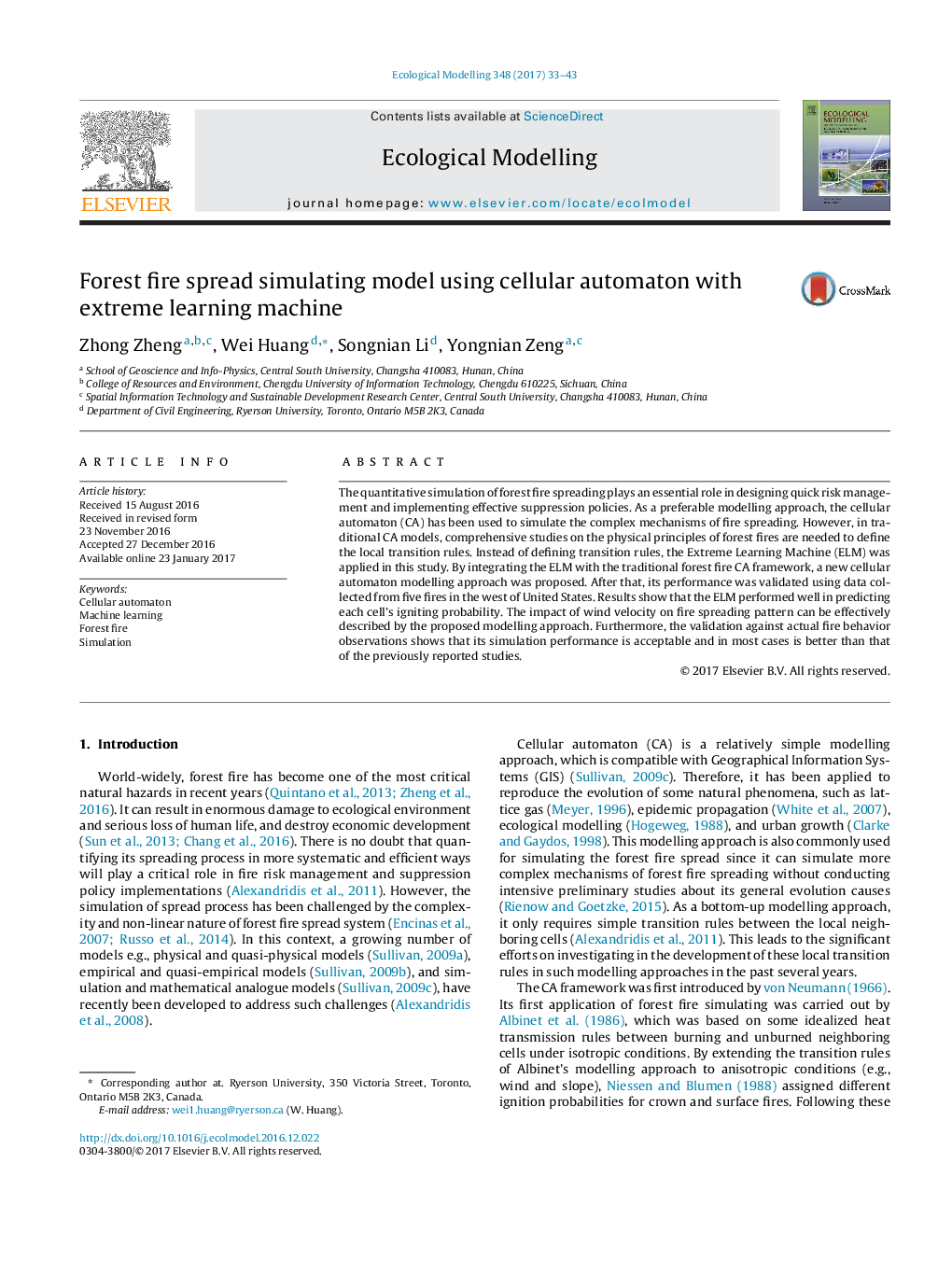| Article ID | Journal | Published Year | Pages | File Type |
|---|---|---|---|---|
| 5742317 | Ecological Modelling | 2017 | 11 Pages |
â¢A new cellular automaton model of forest fire spreading was proposed.â¢Its performance was evaluated using data collected from five fires in the west of United States.â¢This proposed model performed well in predicting each cell's igniting probability.â¢It can describe the impact of wind velocity on fire spreading pattern effectively.â¢It achieves good accuracies in simulating forest fire spread.
The quantitative simulation of forest fire spreading plays an essential role in designing quick risk management and implementing effective suppression policies. As a preferable modelling approach, the cellular automaton (CA) has been used to simulate the complex mechanisms of fire spreading. However, in traditional CA models, comprehensive studies on the physical principles of forest fires are needed to define the local transition rules. Instead of defining transition rules, the Extreme Learning Machine (ELM) was applied in this study. By integrating the ELM with the traditional forest fire CA framework, a new cellular automaton modelling approach was proposed. After that, its performance was validated using data collected from five fires in the west of United States. Results show that the ELM performed well in predicting each cell's igniting probability. The impact of wind velocity on fire spreading pattern can be effectively described by the proposed modelling approach. Furthermore, the validation against actual fire behavior observations shows that its simulation performance is acceptable and in most cases is better than that of the previously reported studies.
